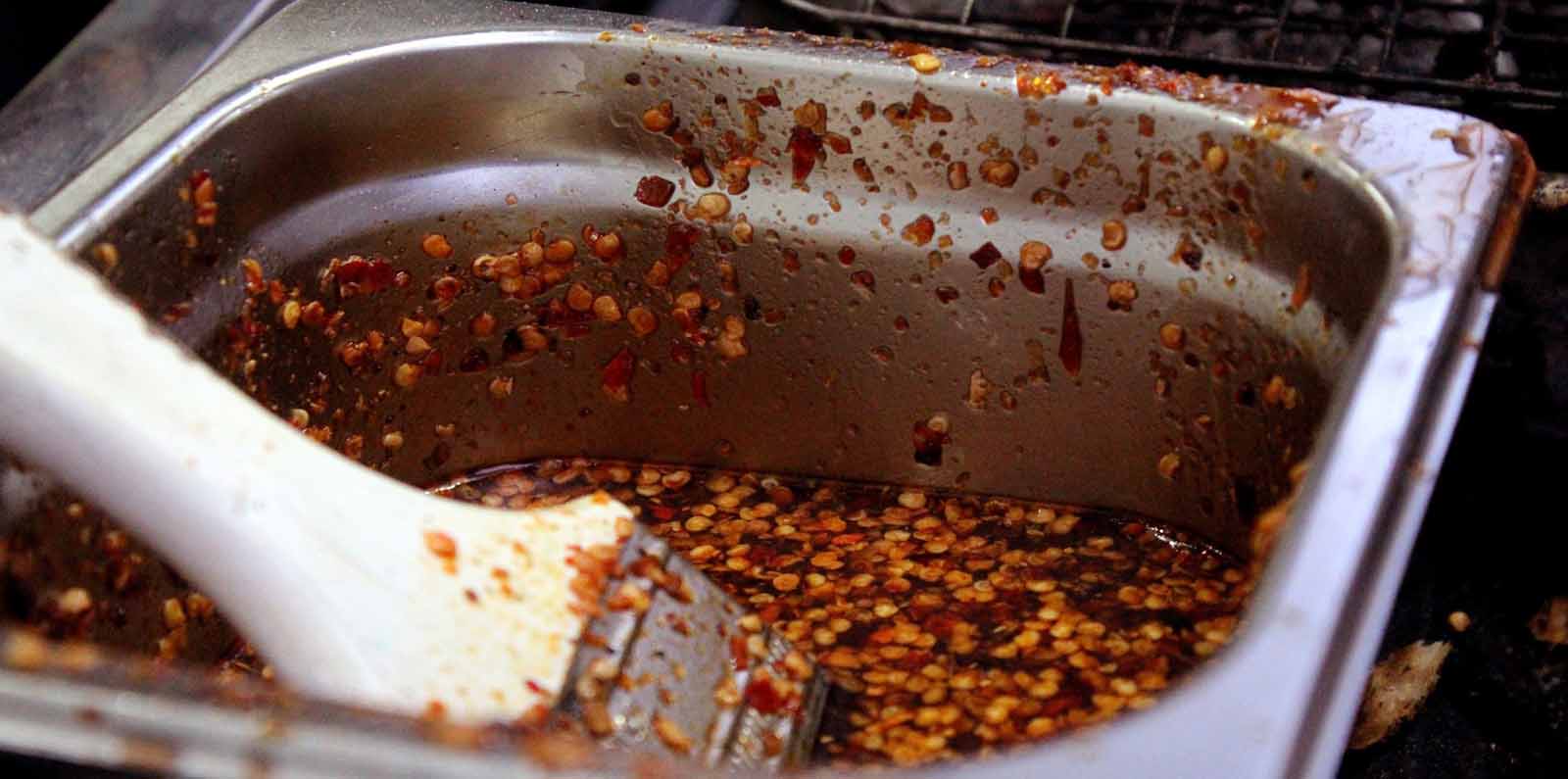I was confident with my “banh mi” choice, knowing that nothing bad could come from the popular specialty. The whole city was baking in the sun and I did not want to go out. I stayed inside an air conditioned room and enjoyed the cool temperature.
- Knock, knock
My friend finally arrived with some 'banh mi' to feed my hungry stomach.
I was eager to take the first bite, but I soon realized that I had made a huge mistake.
- No way. I've got to get this out of my mouth!
The chili in the 'banh mi' was burning my tongue. I gulped down all the water left in my bottle to extinguish the fire in my mouth. I had never tasted anything that hot before. And yes, following that experience, I knew I had to adapt to the city's food culture, where salt and chili reign.
In Hanoi, I usually have to ask the vendor for more chili. In Saigon, it became quickly obvious that chili is an indispensible part of almost every street food dish. There's definitely no need to ask for more, just make sure you ask them to hold back if you're not a fan of spicy food.

When Saigoneers eat 'pho', 'banh mi' or anything else, chili is never far away. When you ask for 'pho' or 'hu tieu', an additional small dish of vegetables and chili will also be served.

When you ask for 'banh khot', the sauce is usually full of chili.
Even when you eat 'rice' with Vietnamese dishes, it is cooked with a lot of chili. Chili is everywhere.
It seems to me that Saigon’s always hot! Its weather is hot, and its food is even hotter, figuratively and literally.
Saigon’s hot food can be felt elsewhere in the country, and it is undeniable that its attraction partly comes from local creativity when it comes to combining different ingredients. Common, simple and cheap, even an experienced cook might overlook them when creating a new dish: salt and chili.
Together with the popular chili, salt helps many new dishes gain their place on the best-seller street food list.
I was amazed. In Hanoi, I have never tasted or even imagined that I would try something do salty and spicy.

Take chili salt grilled 'banh mi' for example.

The sauce that makes the 'banh mi' outstanding.
This new version of 'banh mi' has been a hit since it made its debut, and local businesses have thrived on it since then with a variety of new recipes based on the perfect combination of chili and salt.
A number of other famous dishes have also been born using this simple combo and found a place in Saigoneers' hearts.

Mango shake, the sweet-n-sour marinated mango drink is no stranger to the Vietnamese, but a combination of salt, chili and sauce has people lining up for it.
With mango shake flying out of the door, people are looking to other fruit shakes such as plum, apple, pineapple and even mixed fruit. But they all have one thing in common that makes customers come back for more: chili and salt.
I lived in Saigon for some weeks and obviously, trying to get used to its spicy taste was one way for me to try its famous but cheap street food.
One day, my friend was surprised when I bought him and his family some chili fried seafood for dinner.
- Why? You cannot eat anything with chili?
- No choice. I want everyone to enjoy it. I know they cannot eat the dish without chili.
I did not eat much that evening, but I did enjoy the chili taste. It lingered on my tongue.
After finishing my work in Saigon, I returned to Hanoi and ordered 'banh mi' for breakfast as usual.
But it did not taste right. It seemed there was not enough chili on it.
It was then I realized that the Saigon chili had got me hooked. My 'banh mi' now would be incomplete without some chili.







